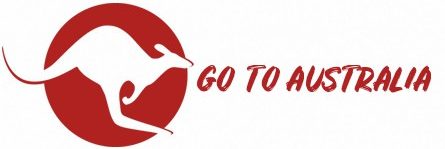Resume Australia - How to write a Resume for Australia
Prior to starting your resume you must first decide what type of resume you want to make. The chronological resume is the most widely used one today. Employment and educational achievements are listed in chronological order beginning with the most recent achievements. Functional resumes can be more useful to you however, in situations such as: you have switched your job frequently, you have large gaps in your education or employment history, your skills come from different pursuits, and/or you are returning to the work force after a long period of time.
A Basic resume has eight parts that are necessary for its effectiveness. The eight parts are as follows:
PART 1: THE BASICS
NAME:
ADDRESS:
CITY:
STATE:
COUNTRY:
PHONE:
ALTERNATIVE PHONE:
EMAIL:
PART 2 – OBJECTIVE
The 1st thing that the employer is going to read will be your objective. This statement has to grab the employer’s attention and make them want to continue reading through the rest of your resume. Give a concise, focused description of why you are the perfect candidate for the job.
PART 3 – EXPERIENCE
The best idea is to do this in chronological order. Listing at least 3 relevant jobs is the best way to do it; however, if you have more or less it is not a problem. Make sure you list when you started and finished your job as well as what your responsibilities were.
PART 4 – EDUCATION
The best idea is to do this in chronological order. Make sure that you list the years that you attended the school(s), as well as what you got out of them.
PART 5 – RELATED COURSEWORK
This is where you can list any extra courses that you may have taken. It gives you a chance to make up for things that you may be lacking in other areas of the resume. It could be certificates that you have gained, or volunteer work you may have done.
PART 6 – KEYWORD SUMMARY
This is where you get to express your most important qualifications of the job. Make sure you list the ones that stand out about yourself the most so an employer would choose you over another possible candidate.
PART 7- INTERESTS
This section is not a mandatory necessity; however, it is a good idea to list a few of your interests so that the employer can get a better idea of who you are.
PART 8- REFERENCES
References are supplied to the employer so he/she has a chance to ask someone who knows you what kind of worker and person you are. If you are going to supply references make sure you list people that are going to say only good things about you. If you do not want to give out your references right away you can just write, ‘References supplied upon request’, so that means you supply the references only when an employer is asking you for them.
After all of these steps are complete make sure to go through your resume and edit it. Check to ensure that the dates are all correct and that all the information is accurate. If there is anything that you forgot you can take the time add things at this time. Then at last, print out your resume and get them distributed out there for jobs!
Personal Statement
The main objective of your resume is to get to the interview stage. Without downgrading yourself it is important that your resume is factual, to the point and honest. As previously stated most Australian employers are honest straightforward people so it is a good idea to start off on the right foot.
It is very easy nowadays for a prospective employer to check on the accuracy of your resume so you really don’t want an employer finding that you have somewhat exaggerated truths on your resume. First of all take time to read and understand the position advertisement.
Make sure you know what qualifications or qualities are being sought after. Summarise your strong points and in a short paragraph list these points in relation to the job you are applying for and why they will help you to be successful in that job.
This is your opening or personal statement. You use this statement to draw your prospective employer in and actually make them interested enough to read the rest of your resume.
Employment History
Most travellers will work in a totally different field to what they have been used to at home. Therefore their previous work experience will quite often have little bearing on the positions they are applying for. However your employment history should show successes you have had in your previous employment. You must show how these successes are relevant to the position you are applying for.
If you are applying for a hospitality position such as bartender or waiter but have never worked in these positions before, highlight the areas of your previous employment where you have had to use a lot of face to face communication as this is the number one skill required for these positions. If you were applying for a fruit picking or farm position but have never worked in either of these, describe roles where you have worked diligently and have not minded getting your hands dirty to make sure the job was completed.
Make sure that when you list the companies or businesses that you have worked for and the roles that you have had include a brief description of both so that interviewer gets more of an idea of your skills. Education – Include details of your education but this is not an integral part of your resume. Skill, qualities and attitude is what the employer will be looking for.
Skills
As mentioned list the skills that you have demonstrated in previous roles that are relevant to the position you are seeking. Hobbies and interests – Once again list the hobbies and personal interests you have that will relate to the position you are seeking or the personality traits you think the employer may be looking for.
References
Even though you may think that the employer may not be bothered checking on your references make sure they are factual and honest. It is a good idea to include a photo on your resume. Be straight up and tell the employer you are on a working holiday visa and how long you will be available to work.



